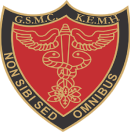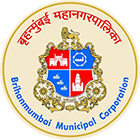

KING EDWARD MEMORIAL HOSPITAL
SETH GORDHANDAS SUNDERDAS MEDICAL COLLEGE
बृहन्मुंबई महानगरपालिका रुग्णालय



KING EDWARD MEMORIAL HOSPITAL
SETH GORDHANDAS SUNDERDAS MEDICAL COLLEGE
बृहन्मुंबई महानगरपालिका रुग्णालय


The department was started in 1959 by Dr R. S Satoskar by using counting of Radioactive Iodine (I-131). The department was under Department of Pharmacology and was located on 2nd floor of OPD building. The department was later taken over by the Department of Medicine under Dr G H Tilve in 1974.
The department was shifted to the ground floor of Orthopedic center in 2009 and has been existing as a separate unit since then.
The SPECT/CT system was installed in 2009 followed by the dual head gamma camera in 2012. The first radionuclide therapy ward (ward no 44) in MCGM hospitals was started in 2015.
The state of art first dedicated PET/CT machine with 128 slice CT in MCGM Hospitals is being installed.
Dr Shwetal Pawar (Associate Professor & In charge)
MBBS, DNB(Nuclear Medicine), MNAMS, MICNM.
Teaching experience: 14 years
Location: Ground floor of orthopaedic center, opposite Tata Memorial Hospital.
Scans / procedures performed:
Any other newer radiopharmaceutical scans are performed as per the request and availability.
Radionuclide therapies offered under Ward 44:
Numerous on Role of Nuclear Medicine on Epilepsy, haemophilia arthropathy, pediatric nephrourology, endocrinology etc.
Q. What is Nuclear Medicine about?
A. It is a diagnostic and therapeutic branch of medicine that uses gamma, Beta and rarely alpha radiation for diagnosis and therapy.
Q. How Safe is the radiation for diagnosis used in Nuclear Medicine?
A. The radioisotopes used for diagnosis in Nuclear Medicine have been approved by the Atomic Energy Regulatory Board and are short lived. They are injected in small amounts and do not cause harm to the patient.
Q. Is it safe to be used in children?
A. These radiopharmaceuticals doses are further adjusted according to the prescribed guidelines for children. There are no reports of them causing reaction or cancer.
Q. Can these investigations be used in very ill and compromised patients?
A. These medicines can be used in all the patients as per the indications. They are safe to be used in patients with kidney failure and heart failure.
Q. Do these investigations cause any adverse effect?
A. These radiopharmaceuticals are inert and do not cause hypersensitivity, allergic or renal impairment.
Q. Can we repeat these investigations?
A. These investigations are safe to be repeated after treatment to assess the response. The results are comparable.
nuclearmedicinekem@gmail.com, 022-24107872